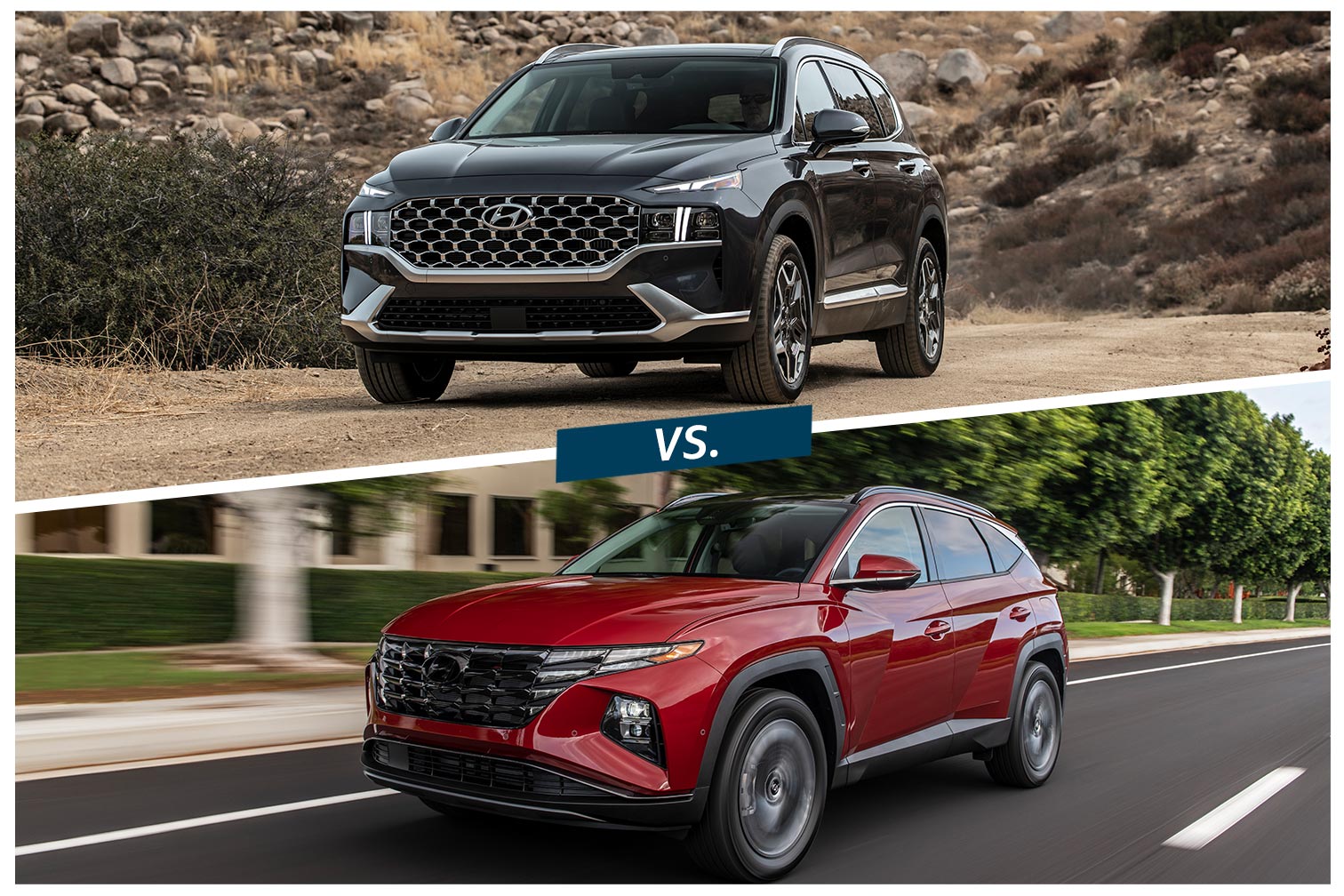Compared: 2022 Hyundai Santa Fe vs. 2022 Hyundai Tucson
The Tucson and Santa Fe share a family-hauling approach, just at different sizes.
 Hyundai
Hyundai
Article QuickTakes:
These days, there are so many SUVs on the market, you need a spotter’s guide to keep them all straight. Even within the same brand, there are many choices to consider. Case in point, Hyundai has eight different sport-utility vehicles, if you include the Santa Cruz pickup truck. Here, we consider two of them: the compact Tucson and the midsize Santa Fe.
Hyundai Santa Fe vs. Hyundai Tucson: Price
Both vehicles offer several trim levels, as well as gas, hybrid, and plug-in-hybrid powertrains. The lowest-priced Tucson, the gas-only SE, starts around $27,000 and comes with front-wheel drive (FWD) and a 187 hp, 2.5L four-cylinder engine. For all-wheel drive (AWD), you’ll need to add $1,500 to the price or select one of the hybridized models, where it’s standard. The hybrid starts around $31,000 and plug-in models just below $37,000, and rely on an electric motor and a turbocharged 1.6L four to make 226 and 261 ponies, respectively.
The SE, which starts around $29,000, is also the starting point for the Santa Fe lineup. This model features a 191 hp, 2.5L four-cylinder and FWD, though you can option AWD for $1,700. The Limited and Calligraphy trims at the top of the range use a turbocharged version of this engine to make 281 horses. You’ll need to spend around $41,000 to get that powertrain, though. As for the Santa Fe hybrids, they employ the same 1.6L as the electrified Tucsons, but open at about $35,500 for the regular hybrid and just under $42,000 for the plug-in.
Hyundai Santa Fe vs. Hyundai Tucson: Interior
In the battle of passenger volume, the slightly larger Santa Fe has a 7-cubic-foot advantage over its compact sibling, but, curiously, the midsizer trails in cargo capacity, offering 36 cu.-ft. to the Tucson’s 39. At the base level, both feature all the expected tech goodies (e.g., Apple CarPlay and Android Auto wireless connectivity, an 8-inch infotainment touchscreen, and advanced safety aids such as lane-keeping assist, blind-spot monitoring, and driver attention warning), though the Santa Fe edges ahead of the Tucson by providing standard adaptive cruise control and USB ports for the rear seats (in addition to the front).
 Hyundai | Santa Fe
Hyundai | Santa Fe
Hyundai Santa Fe vs. Hyundai Tucson: Fuel Economy
As expected, the smaller vehicle is more fuel-efficient than the larger SUV. The front-drive, gas-only version of the Tucson scores 26 mpg in the city and 33 on the highway. The best that the non-hybrid Santa Fe can do is 25 and 28 mpg, respectively. Adding AWD (and/or a turbocharger, in the Sante Fe’s case) hurts those ratings, but not by much.
In the showdown between hybrids, the Tucson also comes out on top. It sees up to 38 mpg in the city and on the highway, while the Santa Fe Hybrid achieves 33 and 30 mpg on those cycles. The same holds true for the plug-ins, with the bantam Hyundai returning 80 MPGe combined and offering up to 33 miles of electric range versus the Santa Fe’s 76 MPGe and 31-mile range.



